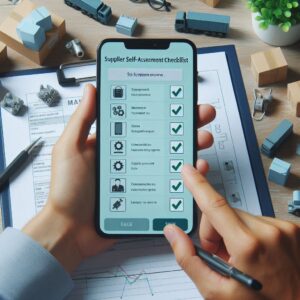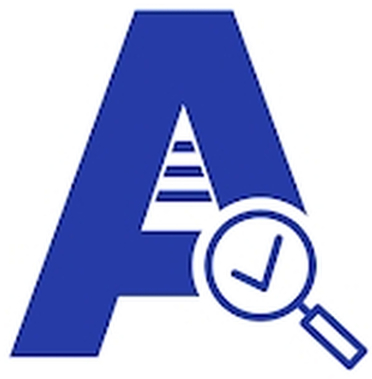Supplier Self-Assessment Audit Checklist
A Supplier Self-Assessment Audit is a tool used by companies to evaluate their suppliers’ compliance with specific standards and requirements.
This type of audit helps companies ensure that their suppliers are adhering to quality, safety, ethical, and environmental standards.

1. Company Information
- Details:
- Company name, address, and contact information.
- Key contacts and their roles.
- Business Overview:
- Description of products or services offered.
- Company mission and values.
- Certifications:
- Relevant industry certifications (e.g., ISO, FDA, CE).
- Quality management system certifications.
2. Quality Management System
- Quality Policy:
- Documented quality policy and objectives.
- Quality Management System (QMS):
- Description of the QMS in place.
- Implementation of processes for quality control.
- Document Control:
- System for maintaining and controlling documentation.
- Continuous Improvement:
- Processes for monitoring and improving quality.
3. Compliance and Regulatory Requirements
- Regulatory Compliance:
- Compliance with relevant industry regulations and standards.
- Environmental and Safety Compliance:
- Adherence to environmental regulations and safety standards.
- Ethical Practices:
- Commitment to ethical business practices and anti-bribery measures.
4. Operational Processes
- Production Processes:
- Description of production or service delivery processes.
- Supplier Management:
- Procedures for selecting and evaluating suppliers.
- Inventory Management:
- Systems for managing and controlling inventory.
- Equipment Maintenance:
- Maintenance schedules and records for equipment.
5. Risk Management
- Risk Assessment:
- Procedures for identifying and managing risks.
- Contingency Planning:
- Plans for addressing potential disruptions in supply or production.
- Health and Safety:
- Measures in place to ensure a safe working environment.
6. Customer Service and Support
- Customer Communication:
- Methods for communicating with customers and addressing concerns.
- Service Level Agreements (SLAs):
- Adherence to SLAs and performance metrics.
- Complaint Handling:
- Procedures for managing and resolving customer complaints.
7. Financial Stability
- Financial Health:
- Overview of financial stability and performance.
- Credit Terms:
- Details of credit terms and payment practices.
- Insurance:
- Types of insurance coverage in place (e.g., liability, product).
8. Human Resources
- Staff Training:
- Training programs and qualifications for staff.
- Employee Health and Safety:
- Measures for ensuring employee health and safety.
- Workforce Management:
- Systems for managing and retaining skilled employees.
9. Technology and Innovation
- Technology Use:
- Use of technology and automation in processes.
- Innovation:
- Efforts towards innovation and improvement of products or services.
- Cybersecurity:
- Measures to protect against cybersecurity threats.
10. Customer and Market Focus
- Market Understanding:
- Knowledge of market trends and customer needs.
- Customer Feedback:
- Methods for gathering and acting on customer feedback.
- Competitive Positioning:
- Strategies for maintaining a competitive edge in the market.
11. Sustainability and Social Responsibility
- Sustainability Practices:
- Initiatives to reduce environmental impact and promote sustainability.
- Social Responsibility:
- Contributions to social and community development.
12. Documentation and Record Keeping
- Records Management:
- Procedures for maintaining and accessing records.
- Audit Trail:
- Documentation of audits and inspections.
13. Review and Action Plan
- Self-Assessment Review:
- Regular review of self-assessment results and processes.
- Action Plan:
- Development and implementation of an action plan to address any identified gaps or areas for improvement.
- Follow-Up:
- Schedule for follow-up assessments and updates.
Supplier Self-Assessment Checklist Using eAuditor Audits & Inspections


Using eAuditor for a Supplier Self-Assessment Audit can streamline the process, making it more efficient and effective. eAuditor is a powerful mobile inspection app that allows you to create, conduct, and report on audits. Here’s a step-by-step guide to conducting a Supplier Self-Assessment Audit using eAuditor:


Step-by-Step Guide
1. Create an eAuditor Account
- Sign up for an eAuditor account on their website or download the app on your mobile device.
2. Set Up Your Audit Template
- Use eAuditor’s template editor to create a custom Supplier Self-Assessment Audit template. You can start from scratch or use a pre-existing template from the eAuditor public library.
3. Design the Audit Template
- General Information:
- Add fields for supplier name, address, contact details, and date of assessment.
- Include fields for the names and titles of the persons completing the assessment.
- Quality Management System:
- Checkboxes for certification status (ISO 9001, ISO 14001, etc.)
- Text fields for document control procedures, process control, corrective actions, etc.
- Production Process:
- Sections for manufacturing process description, equipment maintenance, quality control, etc.
- Supply Chain Management:
- Criteria for supplier evaluation, sub-supplier management, lead times, and inventory management.
- Health, Safety, and Environment:
- Compliance with regulations, environmental practices, waste management, and employee training.
- Ethical Practices:
- Labor laws, anti-corruption policies, fair trade, and social responsibility initiatives.
- Continuous Improvement:
- Methods for identifying improvement opportunities and implementation plans.
- Documentation and Records:
- Availability of records, retention periods, and data protection measures.
- Customer-Specific Requirements:
- Sections for additional customer requirements and evidence of compliance.
4. Share the Template with Suppliers
- Share the audit template with your suppliers through eAuditor. Suppliers can access the template via the app or web portal.
5. Conduct the Self-Assessment
- Suppliers complete the self-assessment audit using the eAuditor app. They can attach photos, videos, and notes for evidence.
- Suppliers can save their progress and submit the audit once completed.
6. Review and Analyze Results
- Once submitted, review the completed self-assessment audit in eAuditor.
- Use eAuditor’s analytics tools to generate reports, identify trends, and highlight areas of concern.
7. Follow Up
- Contact suppliers for any clarifications or additional information.
- Schedule site visits if necessary to validate the self-assessment responses.
8. Take Action and Track Progress
- Based on the audit results, take necessary actions to address any issues.
- Use eAuditor to track progress on corrective actions and improvements.
9. Maintain Records
- Store all completed audits and related documents in eAuditor’s cloud storage.
- Ensure that records are easily accessible for future reference and compliance purposes.
Benefits of Using eAuditor
- Efficiency: Conduct audits quickly and easily using mobile devices.
- Consistency: Standardize the audit process with custom templates.
- Documentation: Capture and store evidence with photos, videos, and notes.
- Real-Time Reporting: Generate and share reports instantly.
- Tracking and Analytics: Monitor audit results and track corrective actions.
